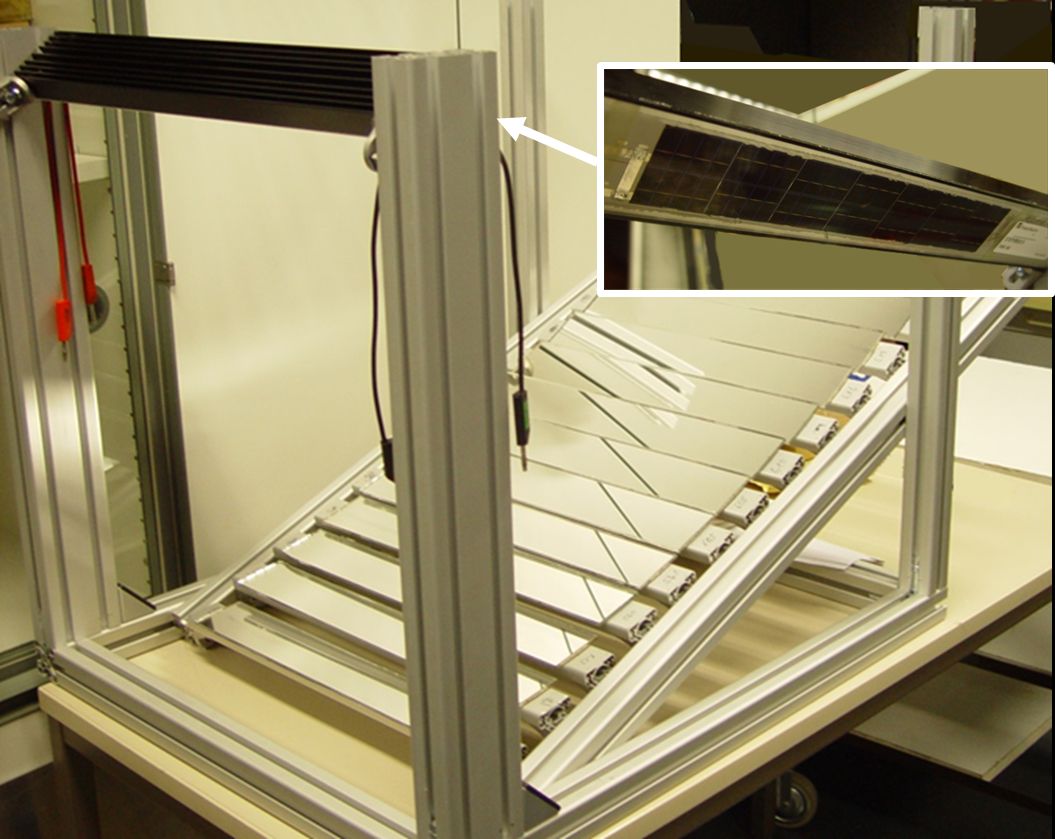| Duration: | July 2014 - December 2016 |
| Contracting Authority/ Sponsors: | Self-funded Research Project |
| Project Focus: |
Receiver and Systems for Low-Concentrating PV (LCPV) – Evaluation of Low-Concentrating Photovoltaic Receivers and Systems

In low-concentrating photovoltaic (LCPV) systems the sunlight is focused 2 to 30 times with an optics onto adapted silicon solar cells. The individual solar cells are wired and enclosed in a receiver so that high electrical efficiency, good thermal conductivity and sufficient protection against environmental influences is given. Mirror or lens optics are used as concentrating optics. They are tracked towards the sun with one or two axis. In every system design the components must be carefully aligned to one another. We developed and investigated a prototype system that uses mirrors in a Fresnel layout as optical concentrator as well as in-house produced Si solar cells. We assess LPCV system concepts not only technically, but also economically.
For a technical assessment of a LCPV system, the overall system as well as the individual components must be characterized under very accurately defined conditions. For this purpose, we set up an optical concentrator based on mirror strips in a Fresnel layout (Fig. 1). We use it for the investigation of solar cell receivers in field operation and in the lab. The radiation profile generated with the optics can be varied to simulate the profile of a different concentrator optics. This gives us the possibility to characterize solar cell receivers under real conditions and with the respectively matched radiation profile.
The system enables us to better understand the behavior under different conditions. At the same time, we improve our evaluation methods for LCPV systems. Besides the technical evaluation, we evaluated the economic feasibility and production suitability. For this purpose, we developed a cost model for low-concentrating CPV systems based on a parabolic trough as optics. We followed a “bottom-up” cost calculation approach to analyze, assess, and compare different technical options and optimizations. According to our study, similar costs as for high-concentrating photovoltaics are already possible. Further cost reductions can be achieved through higher production volumes or system design optimization.
Additional contacts:
Dr. Daniel Biro, silicon concentrator solar cells
Dr. Peter Nitz, concentrator optics
Matthieu Ebert, LCPV receivers